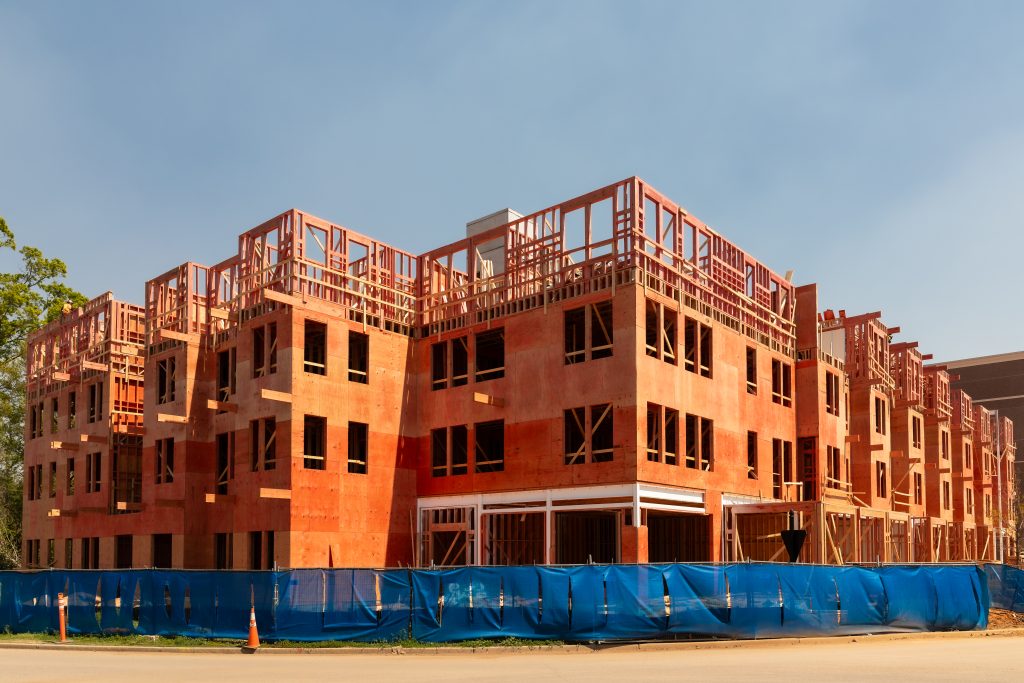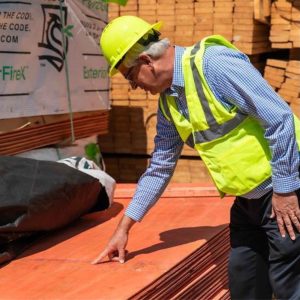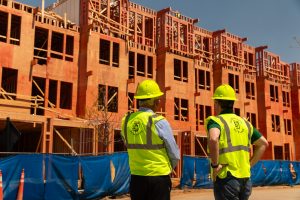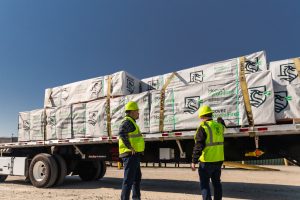Across the country, the conversation around sustainability in construction is shifting. As communities and industries look for greener alternatives, wood stands out — not just for its natural beauty and durability, but for its environmental benefits.

Compared to steel and concrete, wood has a significantly smaller carbon footprint, requires less energy to produce, and stores carbon instead of releasing it. That’s a big deal in a world where construction accounts for 37% of global greenhouse gas emissions.
Carbon Sequestration and Emission Reduction
Wood plays a crucial role in carbon sequestration. As trees grow, they take in carbon dioxide (CO₂) from the air and store it in their trunks, branches and roots. When trees are cut down in a responsible way and used in construction, that carbon stays trapped inside the wood for as long as the building stands. In fact, a study highlighted by the USDA indicates that wood-framed buildings release 26% less carbon than steel-framed buildings and 31% less than concrete-framed buildings.
Energy Efficiency in Production
The production of wood products requires considerably less energy compared to other building materials. Research from the Consortium for Research on Renewable Industrial Materials (CORRIM) shows that constructing a steel-frame home uses 17% more energy than a wood-frame home of the same size, while a concrete-frame home uses 16% more energy. Building with wood means fewer fossil fuels burned and lower greenhouse gas emissions before a building is even occupied.
Sustainable Forestry Practices
Thanks to sustainable forest management practices, the United States has planted more trees than it has harvested for more than 50 years. U.S. forests grow approximately 25 billion cubic feet annually, which is about double the volume that is harvested each year. This practice not only maintains but can enhance forest ecosystems, supporting biodiversity and ensuring a continuous supply of timber.
Wood offers a sustainable path forward in construction. Its ability to sequester carbon, create production efficiencies and regenerate as a natural resource makes it an environmentally smart choice for developers, architects and builders aiming to meet the demands of a low-carbon future.
When code compliance is essential, fire-retardant-treated wood (FRTW) offers a reliable path. Treated to meet stringent fire codes, FRTW provides critical protection without sacrificing the environmental advantages of wood. It’s a proven, code-compliant solution that supports both performance and sustainability.
Our expert team sets out to support and enhance a thriving construction industry through products made for professionals and the planet. Hoover FRTW is an environmentally responsible choice — FSC-, UL (GreenGuard Gold) and LEED-compliant, with a lower carbon footprint than producing concrete or steel.
Where building safely and building sustainably can feel like competing priorities, Hoover proves they don’t have to be. Always building towards better to keep people safer.
If you want to learn more about FRTW or have questions about FRTW code requirements, you can contact TecWood, Hoover’s free FRTW support service by calling 1-800-TEC-WOOD (1-800-932-9663) or email tecwood@frtw.com.



